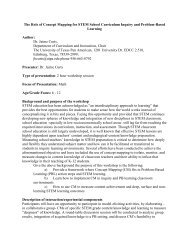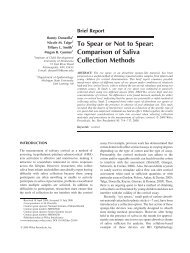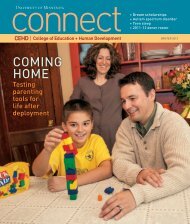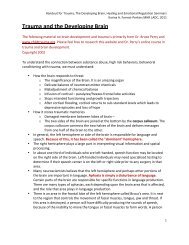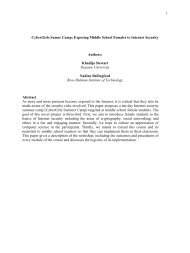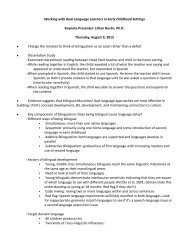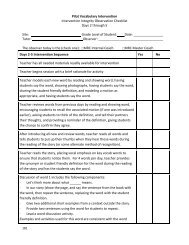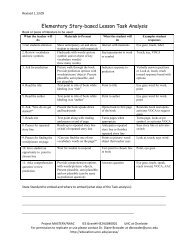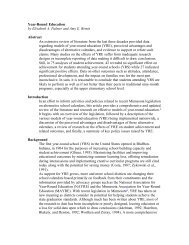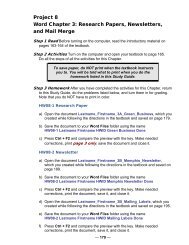Introduction to Positive Ways of Intervening with Challenging Behavior
Introduction to Positive Ways of Intervening with Challenging Behavior
Introduction to Positive Ways of Intervening with Challenging Behavior
Create successful ePaper yourself
Turn your PDF publications into a flip-book with our unique Google optimized e-Paper software.
Social Contracts...<br />
a proactive intervention for the classroom<br />
This Intervention Tip Sheet has been developed <strong>to</strong> assist teachers and parents in providing the best<br />
possible educational opportunities <strong>to</strong> students <strong>with</strong> emotional and behavioral disorders. This Tip Sheet<br />
was published by the Institute on Community Integration, College <strong>of</strong> Education, University <strong>of</strong><br />
Minnesota, Minneapolis and was authored by Kareen Smith <strong>of</strong> the Institute.<br />
<strong>Introduction</strong><br />
A social contract is an agreement negotiated between students and teacher which states classroom principles,<br />
rules, and consequences for classroom behavior. Contracts are different from traditional classroom rules in that<br />
students are involved in designing them, they ensure clarity <strong>of</strong> rules, include consequences and not punishments,<br />
allow for change <strong>with</strong> class needs, have safeguards <strong>to</strong> protect the dignity <strong>of</strong> students, and increase communication<br />
(Curwin & Mendler, 1988).<br />
What components should I consider including in a social contract?<br />
There is no one way <strong>to</strong> construct a contract, but the following are components you should consider including<br />
(Curwin & Mendler, 1988):<br />
Classroom Principles: Principles provide a value system and guidelines for behavior. They are general and not<br />
intended <strong>to</strong> be enforced but provide a context for classroom rules. Examples are:<br />
* Everyone has the right <strong>to</strong> share his/her opinion.<br />
* Be courteous and respectful.<br />
* Everyone is welcome.<br />
Effective Rules: Rules clearly define which behaviors are and are not acceptable <strong>with</strong>in the context <strong>of</strong> classroom<br />
principles. It is best when they describe a specific behavior but are not so specific that they are cumbersome.<br />
Curwin and Mendler (1988) give examples <strong>of</strong> rules which are <strong>to</strong>o vague, <strong>to</strong>o specific, and just right:<br />
Too Vague: Each student must not interfere <strong>with</strong> another student's learning. (This makes a fine principle but not<br />
a rule.)<br />
Too Specific: Do not poke your fingers in another student's eye.<br />
Just Right: Respect each other's space–keep your hands <strong>to</strong> yourself.<br />
Be <strong>Positive</strong> When Possible: This gives students a clearer idea <strong>of</strong> how they should behave, which is more<br />
constructive than only telling them how they should not behave. There are, however, some rules which may be<br />
difficult <strong>to</strong> express in positive terms. For example, "say only nice things about each other" is a rather awkward<br />
and unclear way <strong>of</strong> expressing "no put-downs <strong>of</strong> others are allowed."<br />
Logical Consequences: Consequences are essential <strong>to</strong> a social contract but can be hard <strong>to</strong> develop. Curwin and<br />
Mendler (1988) give the following criteria for consequences:<br />
* Clear and specific.<br />
* Have a range <strong>of</strong> alternatives.<br />
* Not punishments.




